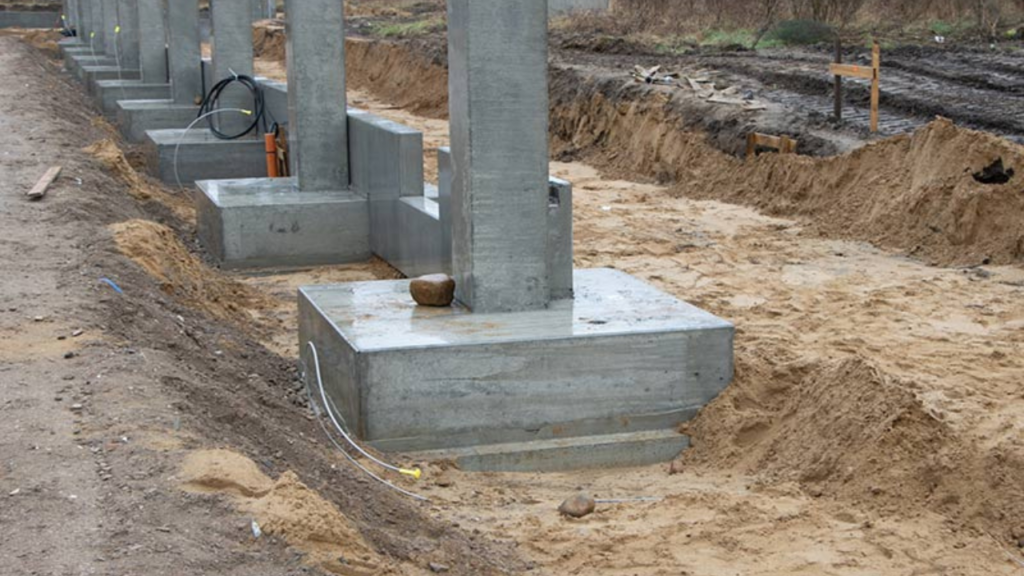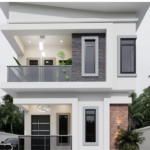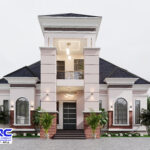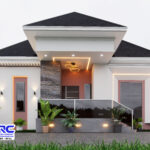When building a house or structure in Nigeria, choosing the right type of foundation is key to the safety and longevity of the building.
One of the most commonly used foundation types, especially for small to medium structures, is the pad foundation.
In this article, we’ll explain what a pad foundation is, when it should be used, and the advantages and disadvantages of using it in Nigerian construction projects.
Table of Contents
ToggleSee related – What is raft foundation | advantages and disadvantages
What Is a Pad Foundation?

A pad foundation is a type of shallow foundation made of concrete pads (usually square or rectangular) that are placed under columns or pillars.
These pads help to transfer the load of the building from the columns to the ground beneath.
Each column sits on its own separate pad, and the size of each pad depends on:
- The weight of the structure
- The bearing capacity of the soil
- The size and height of the building
Pad foundations are usually reinforced with steel bars (rebars) to handle the stress and prevent cracking.
Types of Pad Foundations
- Plain Pad Foundation – simple concrete pad without reinforcement (used for very light loads and good soil).
- Reinforced Pad Foundation – includes steel reinforcement to carry heavier loads.
- Combined Pad Foundation – two or more pads connected when columns are close together or loads are uneven.
- Stepped Pad Foundation – pads that step down in layers to deal with sloped ground or variable soil.
When to Use a Pad Foundation
Pad foundations are ideal when:
- The soil is firm and stable
- The structure is supported by columns
- The building is not too heavy (e.g., bungalows, small duplexes, small commercial buildings)
- Loads are concentrated on specific points (columns)
See also – Which foundation is suitable for which soil?
Advantages of Pad Foundation
1. Cost-Effective
Pad foundations use less concrete and steel compared to raft or pile foundations, making them budget-friendly for small to medium projects.
2. Easy to Construct
They are simple in design and don’t require complicated machinery, making them faster and easier to build.
3. Suitable for Firm Soil
Pad foundations work perfectly in areas with strong, supportive soil such as laterite or compacted red earth.
4. Flexible Design
Can be designed and adjusted to carry different loads and used in various building shapes.
Disadvantages of Pad Foundation
1. Not Suitable for Weak or Waterlogged Soil
Pad foundations may fail if the soil is clayey, swampy, or loose. They’re not ideal for coastal or flood-prone areas.
2. Limited Load Capacity
They are best for low-rise buildings. For multi-storey buildings, raft or pile foundations are usually more appropriate.
3. Risk of Differential Settlement
If the soil underneath one pad shifts or settles more than others, it could lead to cracks or structural damage.
4. Requires Accurate Load Calculations
Improper sizing or design can lead to failure. Always involve a structural engineer for accurate design.
See also – How deep is the foundation of a house in Nigeria?
Pad Foundation vs. Other Foundation Types
- Pad Foundation is best for Small to medium buildings on columns and can be used in Firm/stable soil Low.
- Strip Foundation is best for Load-bearing walls and can be used in firm to moderate soil Moderate.
- Raft Foundation is best for heavy structures, and used in poor soil Weak or waterlogged soil High.
- Pile Foundation is best for high-rise buildings and used in very weak soil, Coastal or swampy areas Very High.
Conclusion
Pad foundations are a simple, affordable, and effective solution for many building projects in Nigeria especially where the soil is strong and the building isn’t too heavy.
They offer a great balance of performance and cost for low-rise residential or commercial structures.
However, they must be properly designed and only used where soil conditions are suitable.
Before choosing a foundation, always conduct a soil test and consult with a qualified structural engineer.
See also – What is the best way for soil stabilization
Frequently asked questions
What is a pad foundation, and how does it work?
A pad foundation is a type of shallow foundation that consists of a concrete block or pad placed beneath a structural column.
It distributes the load from the column directly to the underlying soil.
Pad foundations are typically used for individual columns or small structures, where the loads are concentrated and the soil conditions are adequate to support them.
What are the main advantages of using pad foundations in construction?
Pad foundations are cost-effective and require less material and excavation compared to other types of foundations.
They are easy to design and construct, making them suitable for projects with tight budgets and timelines.
Additionally, they are versatile and can be customized for specific loads and soil conditions, making them ideal for small structures or isolated columns.
What are the disadvantages or limitations of pad foundations?
Pad foundations are not suitable for large or heavy structures due to their limited load distribution capacity.
They require stable and strong soil conditions to prevent settlement or uneven distribution of loads.
In areas with weak or compressible soils, additional reinforcement may be necessary, increasing costs.
They also provide minimal resistance to lateral forces like earthquakes or high winds.
When are pad foundations preferred over other types of foundations?
Pad foundations are preferred when the structure has relatively light loads and is located on soil with good bearing capacity.
They are commonly used for projects with individual columns, such as small buildings, fences, or isolated structures.
Pad foundations are ideal for cases where cost-effectiveness and simplicity are prioritized over heavy-load performance.
What types of structures commonly use pad foundations?
Structures that commonly use pad foundations include small residential buildings, warehouses, industrial facilities, and structures with isolated columns.
They are also used for supporting equipment or machinery in factories and for small-scale infrastructure like signage posts or water tanks.







